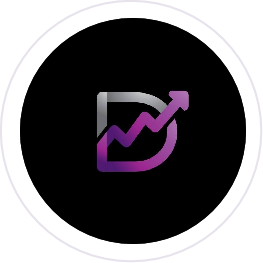 DagangNews.com
DagangNews.com
MICRO FINANCE VERSUS PERSONAL FINANCE
As this portal business news is written either in Bahasa Malaysia or English, this week I will write in English in one way or another. Before I proceed, some of my friends asked me about the title of my column: “SENsorRINGGIT”.
As the title may suggest, my focus will be on finance matters, as TV3 may testify on the return of its popular business program, “Money Matters”, aired at 6pm, every Saturday. We have to agree that many countries will have their national currencies in two denominations, such US in Dollar and Cent, UK in Pound and Pence, so we have Ringgit and Sen.
As such, from economic perspective, all our business transactions in Malaysia are measured by Sen and Ringgit. The word “sensor” refers to a device to track “something”, like many cars now have their “reverse sensor” to track or detect any obstacles while reversing our car. Moving forward, as this column focuses on financial affairs, my article will cover financial markets; be it in unit trust, stock, bond, property, commodity, currency, even unfamiliar derivative markets that are available for trading in Malaysia.
This week we will discuss lightly as promised on micro finance or micro financing in relations to economic stimulus of PRIHATIN and PENJANA. Micro finance also referred as micro financing, micro credit or micro loan in Malaysia. These financial terms are nothing new in Malaysia. Micro financing mostly refers to small business loans and personal loans.
As noted, the first institution in Malaysia that offered micro loans was Amanah Ikthiar Malaysia (AIM), which was developed in 1988 to provide loans only to the poor to assist them for setting up of micro enterprise.
This was then followed by Yayasan Usaha Maju (YUM) of state government of Sabah in 1988 and The Economic Fund for National Entrepreneus Group (TEKUN) in 1998. Very much earlier, we have government agencies, namely MARA, FELDA and Lembaga Pertubuhan Peladang to provide financial and technical assistance to small Malay enterprises.
As reported by many local media, notably newspapers, TV, radio and social media that are surely welcome by those who are badly affected by CMO from 18 March 2020 to its CMO recovery till 31 August 2020.
The first economic revitalization focuses on hire-purchase, housing and personal loans with the introduction of moratorium or postponement of monthly installments for six months from April to September 2020, including educational loans popularly known as PTPTN.
Following suit was PENJANA to help SME businesses, channeling via government agencies namely SME Bank, PERKESO and TEKUN. As reported on air by TV3, many small businesses are very much relieved as they can now re open their businesses closed since March 2020 with the help of small financial grants amounting up to RM10,000.
However I am still in the dark as to why there is no PENJANA AIM as in the case of PENJANA TEKUN though some claimed both are coming from the same target groups. In late March 2020 it was reported that AIM has allocated RM682 million from its own fund to provide financial assistance package to its 373,815 members who are also badly affected by COVID-19.
Back to our Sen and Ringgit discussion, let us try to understand how micro finance differs but may supplement to personal finance. Yes we will focus on an individual rather than institutional point of view.
On one note, micro finance or personal finance relates to personal financing to own real assets such as housing loan or financial assets such as real estate investment trust. On the other note, personal finance is quite similar to corporate finance as we still talk about Income Statement and Balance Sheet.
For business enterprises, income statement (profit and loss account) lists all business revenues from selling and investments, and expenditures from buying raw material to producing finished goods, operating, financing and tax expenses to determine their net profit.
Balance sheet lists all assets as use of funds while liabilities and equity as source of funds. However, we may simplify that for personal balance sheet, assets are owned by us while liabilities are owed by us (debts or money owed).
For income statement, it lists all personal income coming from wages and investment activities while personal expenses are money spent mostly on monthly groceries, utilities, loan repayments, fuel, transportation and rentals in order to determine whether we have a monthly surplus or deficit cash-flows.
Be patient, we will justify and verify on the need to have personal financial planning in the next issue as the classic saying goes: “we never plan to fail but many of us fail to plan”. With alarming figures reported by the World Bank that about 80,000 young Malaysians aged 25-40 were declared bankrupt in the last five years (2015-2019), it is a cause for concern, and hence a wake-up call for government of Malaysia.
ROSALAN ALI, PhD, Fullbright Fellow

